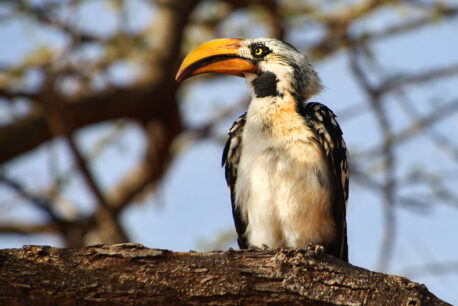The Eastern Yellow-billed Hornbill, Samburu Kenya
The Samburu region of Kenya, a land of stark beauty, is intrinsically linked to the Ewaso Ng’iro River. This vital waterway, a source of life for the region’s people and wildlife, can transform from a gentle stream into a raging torrent during the rainy season, showcasing nature’s power in this semi-arid landscape.
One of the remarkable inhabitants of this environment is the Eastern Yellow-billed Hornbill, a striking bird easily recognized by its distinctive black eye-rings. These hornbills are a common sight in the dry thornveld and broadleaf woodlands, often seen foraging for insects along dusty roadsides.
During the breeding season, the female typically lays three to four white eggs within a tree cavity. She diligently incubates these eggs for about 25 days, after which the chicks hatch and remain in the nest for approximately 45 days until they fledge. The Eastern Yellow-billed Hornbill, a member of the Bucerotidae family, plays a vital role in this ecosystem, contributing to its biodiversity and unique character.
